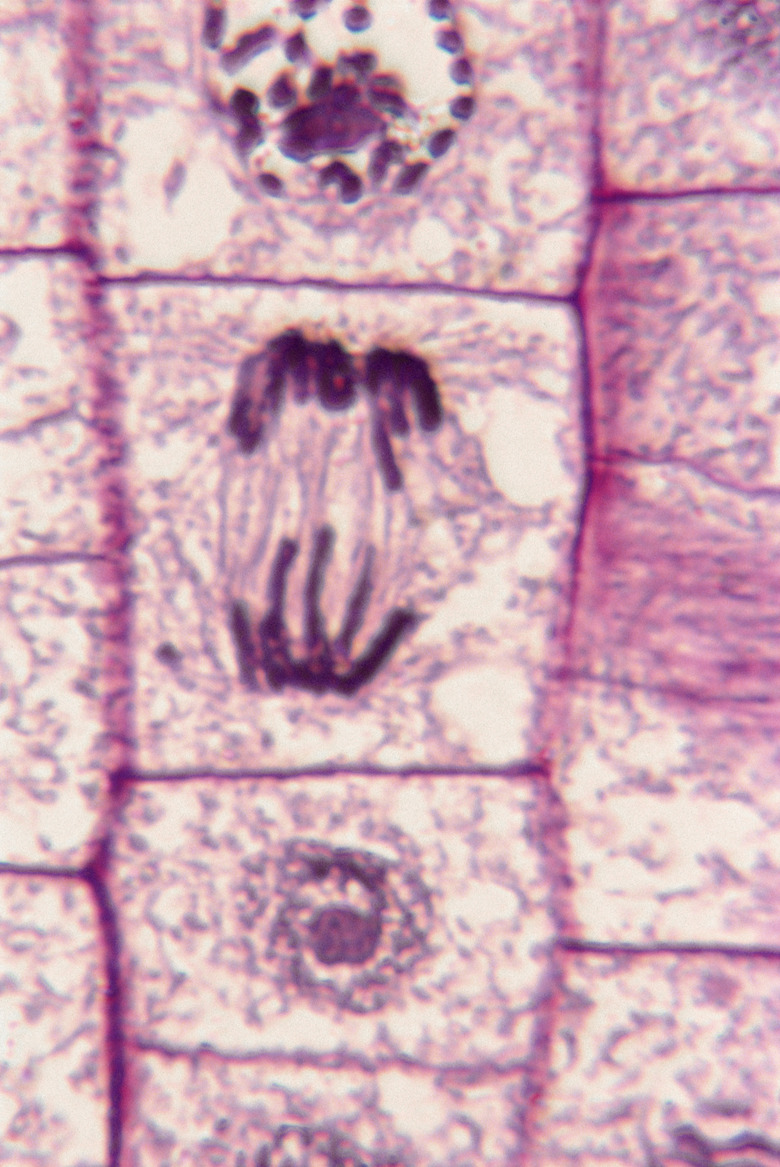What Controls The Production Of Proteins In Your Body?
Human cells are chemical factories capable of performing tasks that would challenge the finest industrial complexes on earth. Even more miraculous is their capability to do it in a space small enough to require extensive microscopic magnification just to observe. These miniature manufacturing marvels can reproduce themselves with little energy and drive the process of building the human body with the precision of a computer. A series of chemical processes maintain control over these functions.
Protein Synthesis Process
Protein Synthesis Process
The process of protein production requires multiple steps. Each of these steps requires signals from outside and from within the cell. The first step is for chemicals outside the cell to call for a need for a particular protein. Specialized structures designed for transduction of the chemical message receive and carry these signals into the cell. From there, the signalling chemicals travel to the nucleus, where the gene containing the instructions to make the cell is read and transcribed into a molecular template. Finally, structures called ribosomes translate the template into an actual protein. Each of these steps involves a series of control mechanisms to initiate and maintain the process.
Transduction
Transduction
When the human body needs more of a specific protein, specialized organs called glands secrete chemical signals called hormones — which in themselves are proteins — in response to some stimulus. Once released into the bloodstream, these hormones come into contact with cells. Specialized structures called receptors latch onto these hormonal chemicals and initiate a progression of molecular transformations, called signal transduction. The chemical message passes through the outer cell wall and into the inner membrane, where the receptor triggers a flurry of chemical activity, which in turn creates messages to send to the cell nucleus to produce the needed protein.
Transcription
Transcription
Within the cell nucleus, the messages from the receptors cause an enzyme called RNA polymerase to relax the DNA strand and split it along the gene where the code for the needed protein is located. From that point, the enzyme reads the DNA and creates a complementary chemical mirror of the needed section in a process called transcription. The product of this process is a strand of messenger RNA (mRNA), which contains the instructions to fabricate the protein needed.
Translation
Translation
As the mRNA leaves the nucleus, a cellular structure called a ribosome intercepts it. The ribosome attaches itself to a section of the mRNA called the start codon, which is a specific triplet of chemicals that control where the protein production process begins. Complexes composed of amino acids linked to transcription RNA (tRNA) bind to their complements in the mRNA. The ribosome travels along the mRNA strand, collecting the amino acids from the tRNA complements, forming them into a simple protein chain. When the ribosome reaches the stop codon, a release factor instructs it to let go of the completed protein.
Cite This Article
MLA
Klaus, Andy. "What Controls The Production Of Proteins In Your Body?" sciencing.com, https://www.sciencing.com/controls-production-proteins-body-8784998/. 24 April 2017.
APA
Klaus, Andy. (2017, April 24). What Controls The Production Of Proteins In Your Body?. sciencing.com. Retrieved from https://www.sciencing.com/controls-production-proteins-body-8784998/
Chicago
Klaus, Andy. What Controls The Production Of Proteins In Your Body? last modified August 30, 2022. https://www.sciencing.com/controls-production-proteins-body-8784998/
